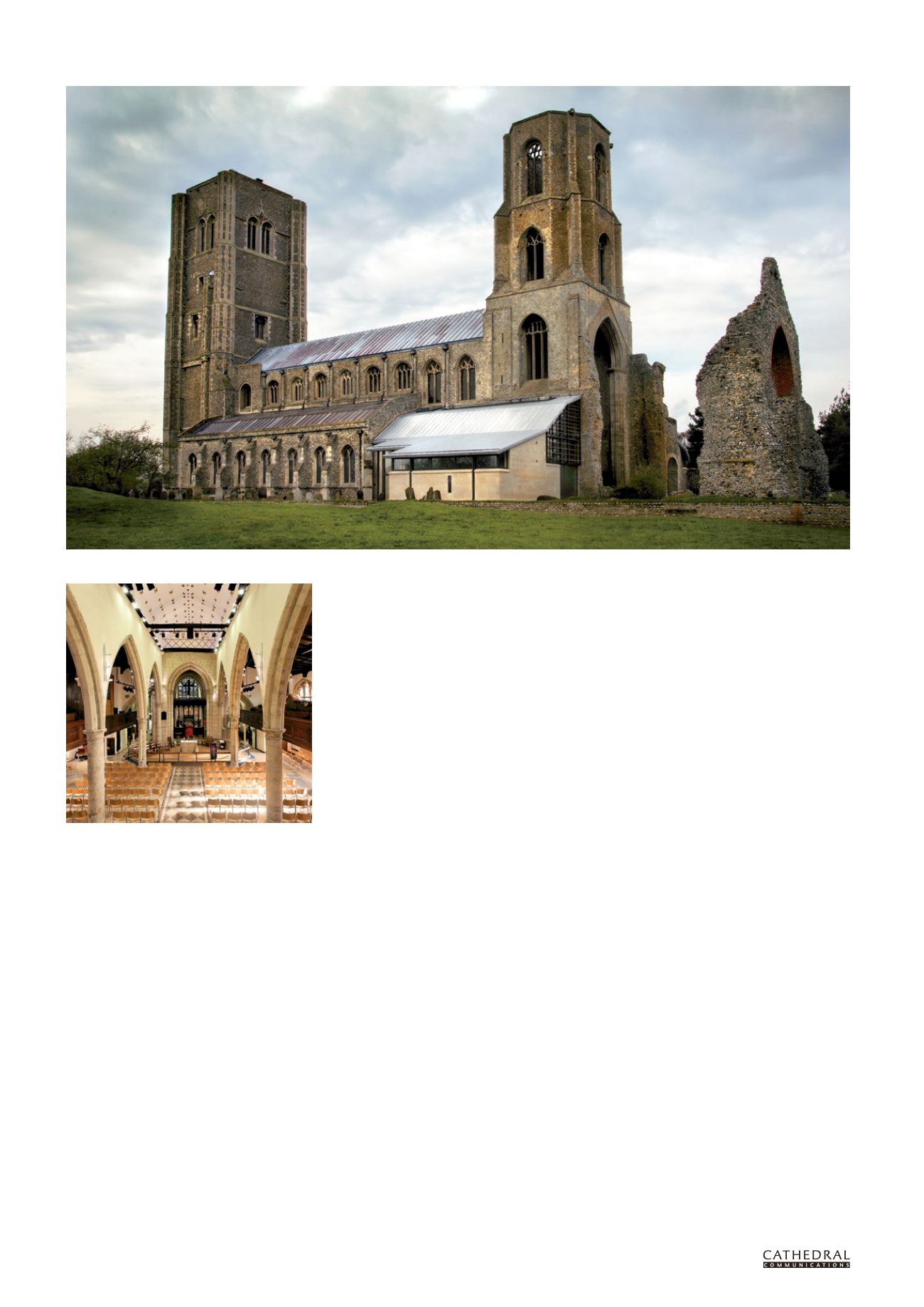

6
BCD SPECIAL REPORT ON
HISTORIC CHURCHES
24
TH ANNUAL EDITION
except when open for worship and are
increasingly marginal to the life of the
communities they exist to serve. They
remain oases of calm, but unavailable.
The picture is far from hopeless. We
commend a rising wave of imaginative
adaptation of church buildings for
community use which has breathed new
life into them. An increasing number, like
St Giles’s, Langford, near Chelmsford,
now house a village shop or post office.
Many, like St Stephen’s in Redditch, are
home to a food bank. Some, like St Mary’s
in Ashford, Kent, have been reordered
to become community arts venues as
well as places of worship. New and ever
more imaginative schemes are constantly
springing up: All Saints in Murston,
Sittingbourne, is the first to host a
community bank.
The examples are myriad and should
serve as an inspiration. If church buildings
are to succeed, their adaptation and
alteration must be welcomed. It should
be sensitive to their heritage and to their
primary purpose as places of worship of
Almighty God, but it should emphatically
not make preserving the status quo a
primary aim. Proper conservation is about
managing change not preventing it. A
case in point is pews, very often a quite
recent addition to churches. Removing
them enables a flexibility in the use of the
building which would have been possible
in the past but which pews prevent.
Only if such flexibility is not merely
allowed but welcomed and encouraged
will churches remain healthy and vibrant
and continue to be used for their original
purpose. The alternative will be for them
to close and that, as I have argued above,
would be a great loss. While our report
acknowledges that some churches will
need to be closed, it also advocates a
change in the mood music: with a positive
mind-set we can see their true potential,
rather than simply characterising them as
a ‘burden’. In
A Little History of the English
Country Church
(2007), Sir Roy Strong
advocates ‘giving the church building
back to the local community, albeit with
safeguards for worship. Change has
been the lifeblood of the country church
through the ages. Adaptation will be more
important than preservation’. Amen to
that, I say.
Further Information
Church Buildings Review Group,
Report
of the Church Buildings Review Group
,
2015
(http://bc-url.com/churchreview)S Coakley in S Wells and S Coakley,
Praying for England: Priestly Presence
in Contemporary Culture
, Continuum,
London, 2008
A Davison and A Millbank,
For the Parish
,
SCM, London, 2010
S Hill, ‘At the Still Point of the Turning
World: Cathedrals Experienced’ in
S Platten and C Lewis (eds),
Flagships of
the Spirit: Cathedrals in Society
, Darton,
Longman and Todd, London, 1998
I Poulios,
The Past in the Present:
A Living Heritage Approach
,
Ubiquity Press, London, 2014
A Rumsey,
Parish: An Anglican Theology
of Place
, Forthcoming
R Strong,
A Little History of the English
Country Church
, Jonathan Cape,
London, 2007
N Walter and A Mottram,
Buildings
for Mission
, Canterbury Press,
Norwich, 2015
JOHN INGE
PhD is the 113th Bishop of
Worcester and lead bishop on Cathedrals and
Church Buildings for the Church of England.
His book,
A Christian Theology of Place
, was
shortlisted for the Michael Ramsey Prize for
Theological Writing.
Wymondham Abbey, Norfolk: the building’s visible history of change and adaptation is part of its beauty (Photo: Barry Cawston/Archbishops’ Council)
St Mary the Virgin, Ashford, Kent: reordering for
community centre with removal of pews (Photo: Lee
Evans Partnership)


















